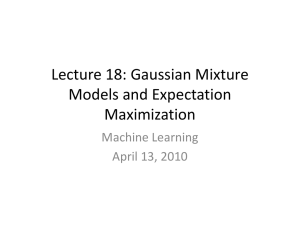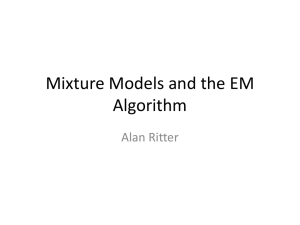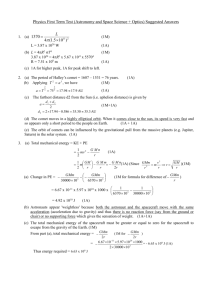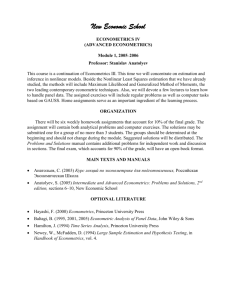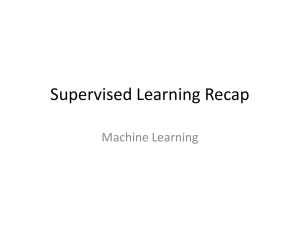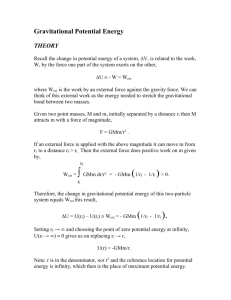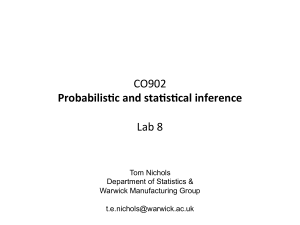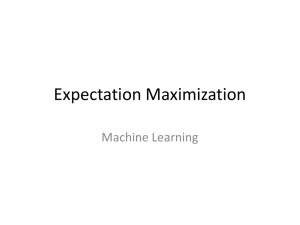GMM-1
advertisement
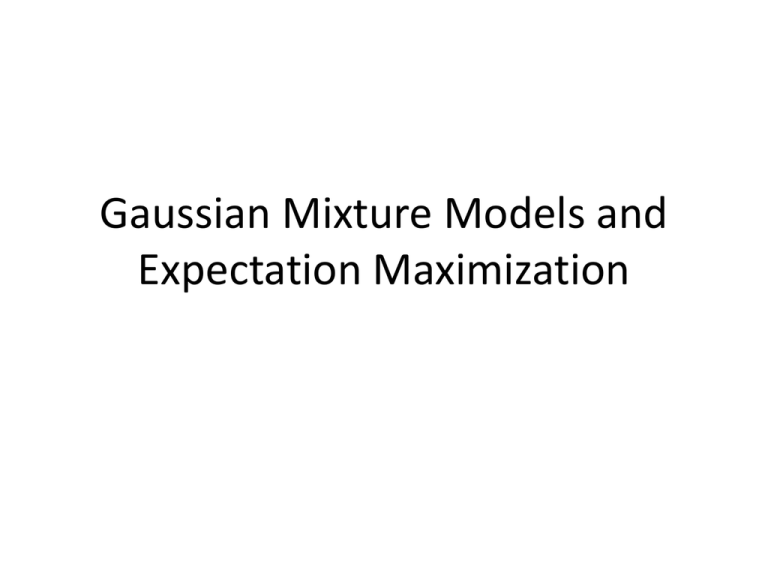
Gaussian Mixture Models and Expectation Maximization The Problem • You have data that you believe is drawn from n populations • You want to identify parameters for each population • You don’t know anything about the populations a priori – Except you believe that they’re gaussian… Gaussian Mixture Models • Rather than identifying clusters by “nearest” centroids • Fit a Set of k Gaussians to the data • Maximum Likelihood over a mixture model GMM example Mixture Models • Formally a Mixture Model is the weighted sum of a number of pdfs where the weights are determined by a distribution, Gaussian Mixture Models • GMM: the weighted sum of a number of Gaussians where the weights are determined by a distribution, Expectation Maximization • The training of GMMs with latent variables can be accomplished using Expectation Maximization – Step 1: Expectation (E-step) • Evaluate the “responsibilities” of each cluster with the current parameters – Step 2: Maximization (M-step) • Re-estimate parameters using the existing “responsibilities” • Similar to k-means training. Latent Variable Representation • We can represent a GMM involving a latent variable • What does this give us? GMM data and Latent variables One last bit • We have representations of the joint p(x,z) and the marginal, p(x)… • The conditional of p(z|x) can be derived using Bayes rule. – The responsibility that a mixture component takes for explaining an observation x. Maximum Likelihood over a GMM • As usual: Identify a likelihood function • And set partials to zero… Maximum Likelihood of a GMM • Optimization of means. Maximum Likelihood of a GMM • Optimization of covariance Maximum Likelihood of a GMM • Optimization of mixing term MLE of a GMM EM for GMMs • Initialize the parameters – Evaluate the log likelihood • Expectation-step: Evaluate the responsibilities • Maximization-step: Re-estimate Parameters – Evaluate the log likelihood – Check for convergence EM for GMMs • E-step: Evaluate the Responsibilities EM for GMMs • M-Step: Re-estimate Parameters Visual example of EM Potential Problems • Incorrect number of Mixture Components • Singularities Incorrect Number of Gaussians Incorrect Number of Gaussians Relationship to K-means • K-means makes hard decisions. – Each data point gets assigned to a single cluster. • GMM/EM makes soft decisions. – Each data point can yield a posterior p(z|x) • Soft K-means is a special case of EM. General form of EM • Given a joint distribution over observed and latent variables: • Want to maximize: 1. Initialize parameters 2. E Step: Evaluate: 3. M-Step: Re-estimate parameters (based on expectation of complete-data log likelihood) 4. Check for convergence of params or likelihood
